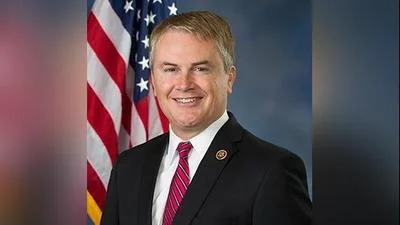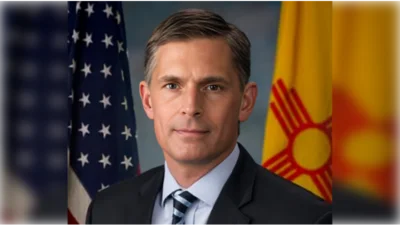Chairwoman Maloney’s April 8 press release “New Document Shows Inadequate Distribution of Personal Protective Equipment and Critical Medical Supplies to States"[1] is flawed and misleading. The Chairwoman utilized information that is outdated, does not reflect current needs or realities on the ground, and ignores the administration’s tireless, whole-of-government effort to address the pandemic. In order to combat what the Centers for Disease Control and Prevention (CDC) has dubbed an “infodemic" of coronavirus misinformation, House Oversight Republicans have complied the most up to date information in the following fact sheet.
Myths versus Facts:
Myth #1: The President failed to bring in the Federal Emergency Managing Agency (FEMA) early on in the response effort.
Reality:
FEMA has been involved in the response to the coronavirus (COVID-19) the entire time. On March 13, 2020, President Trump declared a nationwide emergency pursuant to Sec. 501(b) of the Stafford Act. Under that declaration, the Department of Health and Human Services (HHS) was designated the lead federal agency for the pandemic response with FEMA providing support.[2] On March 18, 2020, Vice President Pence announced that FEMA would take over as the lead federal agency for the federal response.[3]
Myth #2: President Trump failed to fully utilize the authorities Congress gave him under the Defense Production Act (DPA) to procure and manage the distribution of critical supplies.
Reality:
On March 27, 2020, President Trump signed a memorandum directing the Secretary of HHS to use “any and all authority available under the Defense Production Act to require General Motors to accept, perform, and prioritize Federal contracts for ventilators."[4] On April 2, 2020, President Trump issued an order under the DPA to “more fully ensure that domestic manufacturers can produce ventilators needed to save lives." This order to HHS and the Secretary of Homeland Security will “help domestic manufacturers like General Electric, Hill-Rom, Medtronic, ResMed, Royal Philips, and Vyaire Medical secure the supplies they need to build ventilators."[5]
Myth #3: Only 7,920 ventilators have been distributed from the stockpile, even though a recent survey of 213 mayors-which did not include New York City, Chicago, or Seattle-identified a total estimated need of 139,000 ventilators.
Reality:
The totals used by the democrats come from a March survey of mayors conducted between March 20-24. The most up to date information provided by the Institute for Health Metrics and Evaluation show that on the peak day of April 11th, only 16,524 ventilators will be needed not 139,000. FEMA and HHS are working with states directly to meet their current need(s) not necessarily their own projected need.[6]
On March 30th when HHS and FEMA provided a briefing to the Oversight Committee, Chairwoman Maloney stated that she still needed 19,000 ventilators in NY to address the growing number of cases and asked when they would receive them. Dr. Robert Kadlec from HHS stated that he had spoken with the NY state officer that morning, as he does each day, and the state officer said that NY did not require any more ventilators. In other words, he had the amount to meet the current demand.
Myth #4: The government has distributed just a fraction of the personal protective equipment (PPE) and critical medical supplies that our hospitals and medical first responders urgently need. “Now that the Strategic National Stockpile (SNS) has been depleted of critical equipment," Maloney said, “it appears that the Administration is leaving states to fend for themselves, to scour the open market for these scarce supplies, and to compete with each other and federal agencies in a chaotic, free-for-all bidding war."
Reality:
The SNS was seriously depleted during the Obama years. About 75% of N95 respirators and 25% of facemasks contained in the SNS (about 100 million products) were deployed for use in healthcare settings over the course of the 2009 H1N1 pandemic response.[7] Flooding in 2010 in North Dakota, the 2014 outbreaks of the Ebola virus and Botulism, as well as the 2016 outbreak of the Zika virus, continued to significantly exhaust the stockpile with no serious effort from the Obama administration to replenish supplies.[8]
According to the former director of the SNS, “The stockpile can only be a bridge, it can never be the total solution."[9] The stockpile has only received about $600 million per year in appropriations from Congress and that money has to be stretched to cover medicine and supplies for everything from potential anthrax attacks to influenza outbreaks to responses to natural disasters like earthquakes and floods.[10]
FEMA has expressed in every briefing that states need to be in the market finding their own supplies. Having the federal government take over the entire supply chain would result in slower production of products and less efficient allocation. FEMA stood up the Supply Chain Task Force led by Admiral John Polowczyk. The Task Force has four prong approach: preservation (techniques to clean and recycle products), acceleration (expanding manufacturers to increase production), expansion (expand the number of companies and industries making products), and allocation (critical resources sent to areas based on data driven demand and supply).
FEMA is continually searching for and acquiring supplies. FEMA instituted Project Air Bridge which expedites movement of critical supplies from the global market to medical distributors across the U.S. Through this program, FEMA covers the cost to fly supplies into the U.S. from overseas factories, reducing shipment time from weeks to days.[11] As of April 7, fifteen flights have landed, containing critical PPE: gloves, gowns, goggles, and masks.[12] Five flights were scheduled to arrive on April 9, and an additional 52 flights are scheduled over the next three weeks.[13] Per agreements with distributors, 50 percent of supplies on each plane are for customers within the hotspot areas with most critical needs and the remaining 50 percent is delivered to distributors’ normal supply chain(s) to their customers in other areas nationwide.[14]
Sources:
[1] Press Release, H. Comm. on Oversight & Gov’t Reform, New Document Shows Inadequate Distribution of Personal Protective Equipment and Critical Medical Supplies to States (Apr. 8, 2020), https://oversight.house.gov/news/press-releases/new-document-shows-inadequate-distribution-of-personal-protective-equipment-and.
[2] Press Release, Federal Emergency Managing Agency, President Donald J. Trump Directs FEMA Support Under Emergency Declaration for COVID-19 (Mar. 13, 2020), https://www.fema.gov/news-release/2020/03/13/president-donald-j-trump-directs-fema-support-under-emergency-declaration.
[3] Brian Naylor, Known for Disaster Aid, FEMA Prepares for New Challenge with Coronavirus Relief, NAT’L PUB. RADIO (Mar.19, 2020), https://www.npr.org/2020/03/19/817903726/federal-emergency-management-agency-steps-up-incident-level-as-coronavirus-needs.
[4] Statement from the President Regarding the Defense Production Act (Mar. 27, 2020), https://www.whitehouse.gov/briefings-statements/statement-president-regarding-defense-production-act-2/.
[5] Statement from the President Regarding the Defense Production Act (Apr. 2, 2020), https://www.whitehouse.gov/briefings-statements/statement-president-regarding-defense-production-act-2/
[6] COVID-19 projections assuming full social distancing through May 2020, Institute for Health Metrics and Evaluation, https://covid19.healthdata.org/united-states-of-america, (last updated April 8, 2020).
[7] Anita Patel, et. al., Personal Protective Equipment Supply Chain Lessons Learned from Recent Public Health Emergency Reponses, 15 Health Security 244-252 (2017), https://doi.org/10.1089/hs.2016.0129.
[8] Ben Elgin & John Tozzi, Hospital Workers Make Masks from Office Supplies Admits U.S. Shortage, Bloomberg (Mar. 17, 2020), https://www.bloomberg.com/news/articles/2020-03-18/hospital-makes-face-masks-covid-19-shields-from-office-supplies, citing Patel, supra note 7.
[9] Elgin & Tozzi, supra note 8.
[10] Id.
[11] Email from Federal Emergency Managing Agency to House Oversight & Gov’t Reform Staff (Apr. 9, 2020, 1:08 p.m.).
[12] Id.
[13] Id.
[14] Id.







